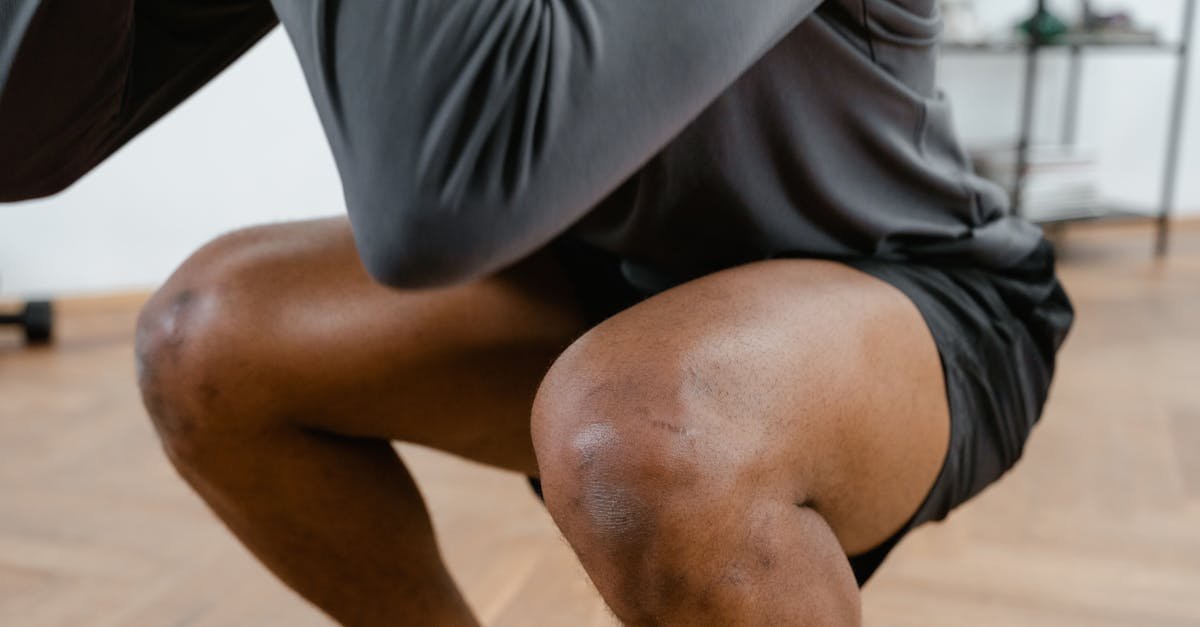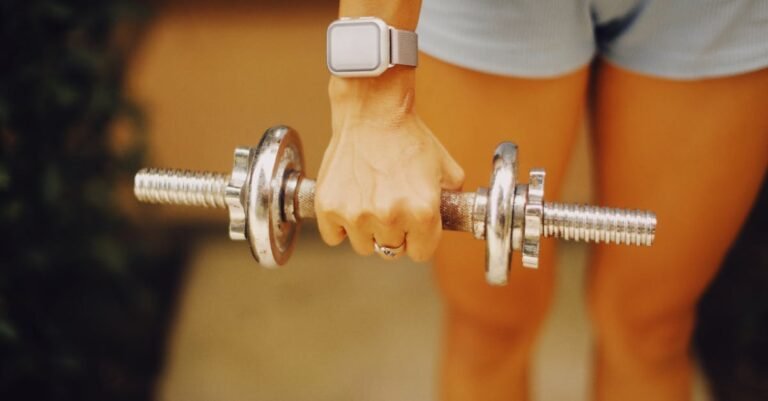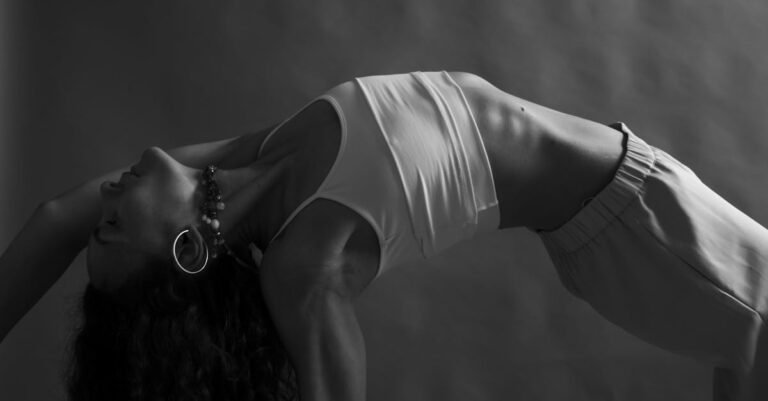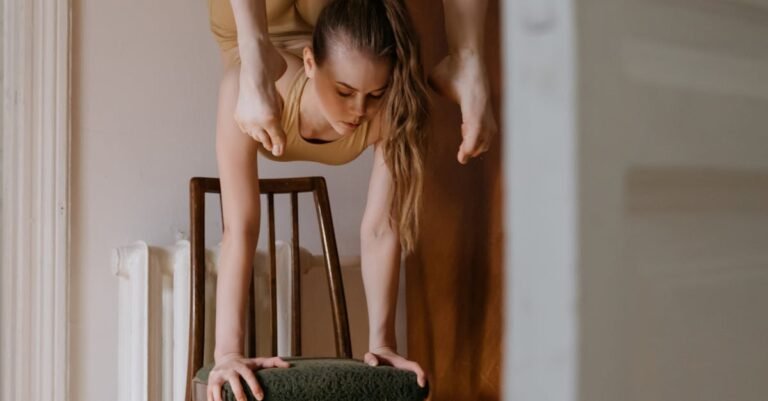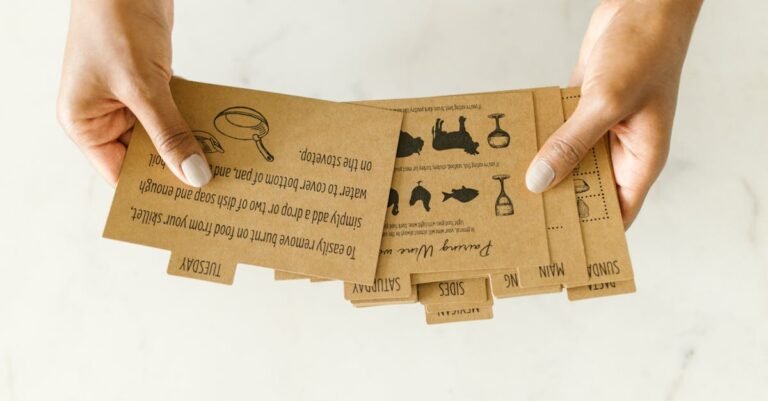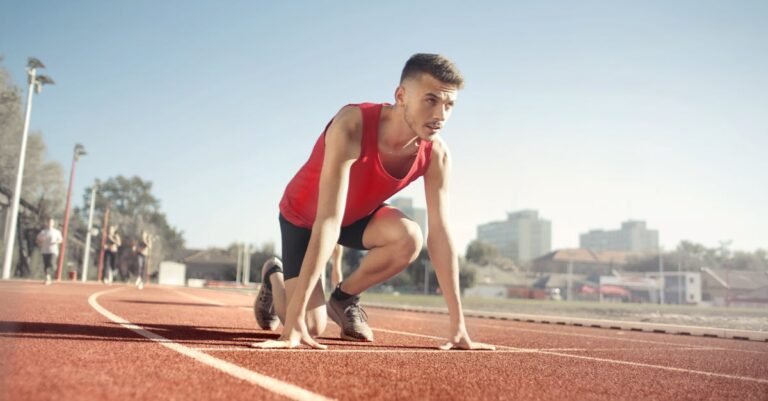Table of Contents
- Bodyweight Squat Variations For Leg Day: Unleash Your Lower Body Power Anywhere!
- Why Bodyweight Squats Are Your Leg Day Secret Weapon
- The Foundation: Nailing the Classic Bodyweight Squat
- Spice It Up! Why Bother With Squat Variations?
- Getting Started: Beginner Friendly Bodyweight Squat Variations
- Level Up: Intermediate Bodyweight Squat Variations
- The Elite Challenge: Advanced Bodyweight Squat Variations
- Putting It All Together: Sample Bodyweight Leg Day Blast
- Conclusion: Your Legs Will Thank You
- Frequently Asked Questions (FAQs)
Bodyweight Squat Variations For Leg Day: Unleash Your Lower Body Power Anywhere!
Ah, leg day. The day that separates the dedicated from the, well, less dedicated. We all know the feeling – the dread, the challenge, the eventual glorious soreness that reminds you you’ve truly worked something. But what if I told you that you don’t need a gym packed with intimidating machines or heavy barbells to absolutely demolish your lower body? What if your own bodyweight holds the key to sculpted, strong legs? Enter the humble, yet mighty, bodyweight squat and its incredible family of variations!
Forget thinking squats are just *one* exercise. That’s like saying music is just *one* song! Bodyweight squats are a fundamental movement pattern, the bedrock upon which powerful legs are built. And the best part? You can do them virtually anywhere, anytime. No expensive memberships, no waiting for equipment, just you and the desire to build some serious leg strength. Ready to transform your leg day using nothing but gravity and grit? Let’s dive deep into the world of bodyweight squat variations.
Why Bodyweight Squats Are Your Leg Day Secret Weapon
Okay, let’s get real. Why focus on bodyweight squats when there are leg presses, hack squats, and endless machines vying for your attention? Because simplicity breeds mastery, my friend. Bodyweight squats are incredibly effective for several reasons:
- Accessibility: Literally all you need is yourself and a little bit of space. Hotel room? Living room? Park bench? Check, check, and check. This removes a massive barrier to consistency.
- Functional Strength: Squatting is something we do every day – getting out of a chair, picking something up, sitting down. Strengthening this pattern makes everyday life easier and reduces injury risk. It’s real world power!
- Full Body Engagement (Sort Of!): While primarily a lower body exercise targeting quads, glutes, and hamstrings, a proper bodyweight squat also demands core stability and upper back engagement to maintain posture. It’s more integrated than you might think.
- Scalability: This is where the variations truly shine. Whether you’re a complete beginner or a seasoned fitness enthusiast, there’s a bodyweight squat variation to challenge you appropriately. It grows *with* you.
- Joint Health: Performed correctly, squats can actually improve knee and hip mobility and stability. They encourage blood flow and strengthen the supporting structures around the joints.
Think of the basic bodyweight squat as your foundational note. It’s essential. But the variations? They’re the chords, melodies, and harmonies that turn a simple note into a full blown symphony of leg development!
The Foundation: Nailing the Classic Bodyweight Squat
Before we jump into the fancy stuff, we absolutely *must* master the classic bodyweight squat. Get this wrong, and you not only limit your gains but also risk injury. Get it right, and you build a solid platform for all future progress. It’s like learning your scales before attempting a complex solo.
Proper Form Checklist: Your Squatting Blueprint
Let’s break it down step by step. Imagine you’re about to sit back into a chair that’s slightly too far behind you:
- Stance: Stand with your feet slightly wider than shoulder width apart. Toes can point straight ahead or slightly outwards (find what feels comfortable and natural for your hips).
- Core Engagement: Brace your core! Imagine someone is about to gently poke you in the stomach – tighten those abdominal muscles. This protects your lower back.
- Chest Up, Back Straight: Keep your chest proud and your spine neutral. Avoid rounding your lower back or excessively arching it. Think “tall spine.” Looking straight ahead or slightly up can help.
- Initiate with Hips: Start the movement by pushing your hips back, *then* bending your knees. This is crucial for engaging the glutes and hamstrings properly.
- Depth: Lower yourself down as if sitting in that imaginary chair. Aim for your thighs to be at least parallel to the floor, or deeper if your mobility allows *without* compromising form (especially keeping that neutral spine).
- Knee Tracking: Ensure your knees track in line with your toes. Don’t let them cave inwards (knee valgus) – actively push them slightly outwards if needed.
- Weight Distribution: Keep your weight balanced over your mid foot, perhaps feeling slightly more towards your heels, but don’t let your toes lift off the ground.
- Ascend: Drive through your feet (imagine pushing the floor away) to return to the starting position. Squeeze your glutes at the top for full hip extension.
- Breathing: Inhale as you lower down, exhale as you drive back up.
Watch Out! Common Squat Mistakes to Sidestep
Even seemingly simple movements have pitfalls. Be mindful of these common errors:
- Knees Caving Inward: A big no no! This puts stress on the knee joint. Focus on pushing knees out slightly. Weak glute medius muscles are often the culprit.
- Rounding the Lower Back (Butt Wink): As you go deeper, your lower back might round under. This often indicates tight hamstrings or limited ankle/hip mobility. Only squat as deep as you can maintain a neutral spine.
- Leaning Too Far Forward: While some forward lean is natural, excessive leaning often means weak quads or poor core stability. Keep that chest up!
- Coming Up Onto Toes: This usually signals tight calves or trying to compensate for lack of mobility elsewhere. Keep those heels planted.
- Initiating with Knees: Starting the squat by bending the knees forward before the hips go back puts unnecessary shear force on the knees. Hips back *first*!
- Not Going Deep Enough: While form is paramount, consistently cutting your squats high limits muscle activation, especially in the glutes. Work on mobility to achieve parallel or below.
Film yourself or ask a friend to watch you. Honesty about your form is key to progress and injury prevention!
Spice It Up! Why Bother With Squat Variations?
Okay, you’ve nailed the basic squat. High five! So why complicate things? Why not just do hundreds of standard bodyweight squats? Well, you could, but you’d be missing out on a whole world of benefits.
Pinpoint Precision: Targeting Specific Muscles
Think of your leg muscles like different sections of an orchestra. The standard squat might hit the whole brass section well, but what about the strings or woodwinds? Variations allow you to shift the emphasis.
- Want more glute and inner thigh activation? Try a Sumo Squat.
- Need to hammer those quads and adductors? A Close Stance Squat might be your ticket.
- Looking to build explosive power? Hello, Jump Squats!
- Ready to challenge balance and single leg strength? Pistol Squats (or their progressions) await.
Variations let you fine tune your workout to target weaknesses or focus on specific aesthetic or performance goals.
Smashing Through Walls: Breaking Fitness Plateaus
Your body is incredibly adaptive. If you do the same thing over and over, it gets efficient at it. That’s great for survival, but less great for continued muscle growth or strength gains. Eventually, just doing more standard squats won’t provide enough stimulus.
Introducing variations is a form of progressive overload, even without adding external weight. Changing the stance, tempo, adding a jump, or moving to single leg work presents a novel challenge that forces your muscles to adapt and grow stronger. It keeps your body guessing!
Beat the Bore: Keeping Your Workouts Fresh and Fun
Let’s be honest: doing the exact same workout week after week can get boring. And when boredom sets in, motivation often packs its bags and leaves. Variety isn’t just good for your muscles; it’s good for your mind!
Learning new movements, challenging your coordination and balance in different ways, and feeling yourself progress through different squat variations keeps things engaging. It makes leg day something to look forward to (or at least dread slightly less!). A fun workout is a sustainable workout.
Getting Started: Beginner Friendly Bodyweight Squat Variations
Just starting your fitness journey or coming back after a break? No problem! These variations are perfect for building foundational strength and confidence before moving on to more challenging movements.
The Unshakeable: Wall Squat Hold (Isometric Power)
This isn’t technically a squat *variation* in the dynamic sense, but an isometric hold that builds incredible endurance in the quads and glutes while reinforcing good posture. It’s deceptively tough!
How to do it:
- Stand with your back flat against a sturdy wall.
- Walk your feet out away from the wall, about two feet or so.
- Slide your back down the wall until your knees are bent at roughly a 90 degree angle, like you’re sitting in an invisible chair. Your thighs should be parallel to the floor.
- Ensure your knees are tracking over your ankles and your back remains pressed against the wall.
- Hold this position! Start with 20 30 seconds and gradually increase the duration as you get stronger. Feel the burn!
Why it’s great for beginners: It takes balance out of the equation, allowing you to focus purely on leg engagement and enduring the burn. It also teaches proper knee alignment.
Lend a Hand: Assisted Squat (Building Confidence)
If you’re struggling with balance or reaching full depth in a standard squat, using assistance is a fantastic way to bridge the gap.
How to do it:
- Stand facing a sturdy chair, countertop, door frame, or even a suspension trainer (like TRX).
- Place your hands lightly on the support object.
- Perform a standard bodyweight squat, using the support *only as much as needed* to maintain balance and achieve good form/depth.
- Focus on the correct squat mechanics: hips back first, chest up, knees tracking toes.
- Use your legs to drive back up, minimizing how much you pull with your arms.
Why it’s great for beginners: It provides security and allows you to practice the movement pattern correctly without the fear of falling. As you get stronger, rely less and less on the support until you can perform unassisted squats flawlessly.
Level Up: Intermediate Bodyweight Squat Variations
Feeling comfortable with the basics? Ready to add a little more spice and challenge? These variations introduce different stances and tempos to work your muscles in new ways.
Inner Strength: Close Stance Squat (Adductor Activation)
Bring those feet closer together, and you’ll feel a different kind of burn, particularly in the outer quads (vastus lateralis) and potentially more in the adductors (inner thighs) for stability.
How to do it:
- Stand with your feet closer than shoulder width apart, maybe even hip width or slightly less. Find a stance that feels stable.
- Keep your chest up and core braced.
- Initiate by sending your hips back and bending your knees, squatting down as deep as you comfortably can while maintaining good form. Depth might be more limited here than in a standard squat.
- Pay extra attention to keeping your knees tracking forward or slightly out; they might want to cave in more with this narrow stance.
- Drive back up to the starting position.
Why it’s great for intermediate lifters: It challenges stability and targets the quads differently, requiring more control to prevent the knees from collapsing inward.
Go Wide: Wide Stance (Sumo) Squat (Glute & Inner Thigh Emphasis)
Now let’s go the other way! The sumo squat opens up the hips and shifts the focus significantly towards the glutes and inner thighs (adductors).
How to do it:
- Take a stance significantly wider than shoulder width. How wide depends on your hip mobility, but think *wide*.
- Point your toes outwards, perhaps at a 45 degree angle or whatever allows your knees to track comfortably over your feet during the squat.
- Keep your torso as upright as possible (you won’t lean forward as much as in a standard squat). Brace your core.
- Lower down by bending your knees and pushing your hips back slightly. Focus on pushing your knees outwards, in line with your toes.
- Squat as deep as your mobility allows, feeling a stretch in the inner thighs.
- Drive through your heels to return to the top, squeezing your glutes hard at the peak.
Why it’s great for intermediate lifters: It’s fantastic for targeting the glutes and adductors, muscles often less emphasized in standard squats. It also requires good hip mobility.
Hold That Pose: Pause Squat (Boosting Time Under Tension)
This variation isn’t about changing the stance, but changing the *tempo*. Adding a pause at the bottom dramatically increases the time your muscles are under tension, building strength and muscle endurance.
How to do it:
- Perform a standard bodyweight squat (or a close/wide stance variation if you prefer).
- Lower yourself down with control into the bottom position (thighs parallel or below).
- Instead of immediately driving back up, *pause* and hold this bottom position for a predetermined count (e.g., 2 3 seconds, or even longer).
- Maintain tension throughout the pause – keep your core braced, chest up, don’t relax!
- After the pause, drive explosively back up to the starting position.
Why it’s great for intermediate lifters: It eliminates the stretch reflex (the little bounce out of the bottom), forcing your muscles to work harder. It improves control, stability, and strength in the toughest part of the squat.
The Elite Challenge: Advanced Bodyweight Squat Variations
Think bodyweight squats are easy? Think again. These advanced variations will test your strength, power, balance, and mobility like never before.
Take Flight: Jump Squat (Explosive Power Unleashed)
Time to add some air! Jump squats are a plyometric exercise fantastic for developing explosive power, improving athletic performance, and cranking up the cardiovascular intensity.
How to do it:
- Start in your standard squat stance.
- Lower down into a squat position with good form (at least parallel).
- Instead of just standing up, explode upwards! Drive powerfully through your feet and jump vertically as high as you can.
- Use your arms to help generate upward momentum, swinging them up as you jump.
- Land softly! This is crucial. Absorb the impact by immediately bending your knees and hips, going back into the next squat repetition. Land quietly, like a ninja.
- Aim for continuous, powerful repetitions.
Why it’s great for advanced lifters: It builds explosive leg power (great for sports), seriously elevates your heart rate for a cardio effect, and challenges coordination during the landing phase.
One Leg Wonders: Pistol Squat Prep (Building Single Leg Dominance)
The pistol squat (a full squat on one leg with the other leg extended straight out) is the gold standard of bodyweight leg strength. It requires immense strength, balance, mobility, and control. Most people need to work up to it gradually.
Step By Step: Assisted Pistol Squat Progressions
Mastering the pistol takes patience. Here’s how to chip away at it:
- Single Leg Balance: Can you simply stand on one leg without wobbling for 30 60 seconds? Start there.
- Assisted Pistols: Hold onto a door frame, sturdy pole, or suspension trainer for support. Stand on one leg, extend the other forward. Lower down as far as you can using the support for balance and assistance, focusing on controlling the descent on your standing leg. Use your leg as much as possible to come back up. Gradually reduce the assistance.
- Pistol to Box/Chair: Place a low box or chair behind you. Perform a pistol squat, but only lower until your glutes gently touch the box/chair. This limits the range of motion, allowing you to build strength in a controlled way. Gradually lower the height of the box.
- Counterbalance Pistols: Hold a small weight (2.5 5 lbs) out in front of you with both hands. This acts as a counterbalance, making the balance component slightly easier as you attempt the full pistol.
- Eccentric Pistols: Focus only on the lowering phase. Stand on one leg and lower yourself down into a full pistol squat as slowly and controlled as possible (e.g., 5 second descent). Use both legs to stand back up, or use assistance. This builds strength in the hardest part of the movement.
Why it’s great for advanced lifters: It develops incredible single leg strength, balance, and mobility. It highlights and corrects strength imbalances between legs.
Balance Master: Shrimp Squat (The Ultimate Test)
If the pistol squat challenges strength and mobility, the shrimp squat (also known as the airborne lunge) adds an extra layer of complexity by requiring you to hold your non working foot behind you.
How to do it:
- Stand on one leg. Bend the other knee and grab the ankle/foot of the non working leg with one or both hands behind your back. (Beginners might start without holding the foot).
- Keeping your chest up and core braced, lower yourself down by bending the standing leg’s knee and hip.
- Aim to touch the knee of your non working leg gently to the ground behind your standing foot (use a pad if needed).
- Drive through your standing foot to return to the starting position, maintaining balance throughout. This is tough!
Why it’s great for advanced lifters: It demands exceptional balance, single leg strength (especially quad dominant), and hip/knee mobility. It’s a true test of coordination and control.
Putting It All Together: Sample Bodyweight Leg Day Blast
Okay, theory is great, but how do you structure this into a workout? Here’s a sample intermediate/advanced routine focusing purely on bodyweight squat variations. Adjust reps/sets/variations based on your current fitness level.
Warm up (5 10 minutes): Light cardio (jogging in place, jumping jacks), dynamic stretches (leg swings, torso twists), and a few sets of standard bodyweight squats to get primed.
Workout:
- Standard Bodyweight Squats: 3 sets of 15 20 reps (Focus on perfect form)
- Pause Squats (3 second pause): 3 sets of 10 12 reps (Focus on control)
- Sumo Squats: 3 sets of 12 15 reps (Focus on glute squeeze)
- Jump Squats: 3 sets of 8 10 reps (Focus on explosive power and soft landings)
- Assisted Pistol Squats / Pistol to Box: 3 sets of 5 8 reps per leg (Focus on single leg control) OR Close Stance Squats: 3 sets of 12 15 reps if pistols are too advanced yet.
- Wall Squat Hold: 2 sets to failure (Hold as long as possible with good form)
Cool down (5 minutes): Static stretching (quad stretch, hamstring stretch, glute stretch).
Remember to listen to your body! Rest 60 90 seconds between sets. If a variation feels too difficult or causes pain, regress to an easier version or focus on improving mobility.
Conclusion: Your Legs Will Thank You
So there you have it! The world of bodyweight squats is far richer and more challenging than many people realize. From mastering the fundamental movement to tackling advanced single leg variations, you have a powerful arsenal at your disposal for building strong, functional, and impressive legs – no gym required.
By incorporating different squat variations into your routine, you can continuously challenge your muscles, break through plateaus, target specific areas, and keep your workouts engaging. It’s about working smarter, using the amazing machine that is your own body. So next leg day, ditch the excuses, find some space, and get ready to squat your way to stronger legs. Your lower body will definitely feel it, but trust me, it’ll thank you later!
Frequently Asked Questions (FAQs)
1. Can I really build significant muscle mass with only bodyweight squats?
Absolutely! Especially for beginners and intermediates. By utilizing progressive overload principles (increasing reps, sets, decreasing rest, improving tempo, moving to harder variations like single leg squats), you provide the stimulus needed for muscle growth (hypertrophy). While there might be a limit compared to heavy barbell squats eventually, you can build very strong and muscular legs using just bodyweight variations.
2. How often should I train legs using these bodyweight squat variations?
For most people, training legs 1 2 times per week with adequate rest in between is optimal for recovery and growth. Listen to your body – if you’re still very sore, give yourself an extra day or two. Consistency is key, but so is recovery.
3. My knees hurt when I squat. Should I avoid them?
Not necessarily, but you *must* address the cause. Knee pain during squats often stems from improper form (like knees caving in), limited ankle or hip mobility forcing compensation at the knee, or underlying joint issues. First, perfect your form with basic squats or assisted variations. Work on ankle and hip mobility exercises. If pain persists, consult a physical therapist or doctor. Don’t push through sharp pain.
4. What’s more important: squat depth or number of reps?
Form and appropriate depth are more important than simply banging out high reps with poor technique. Aim to squat to at least parallel (thighs parallel to the floor) or deeper *if* you can maintain a neutral spine and good form. Quality over quantity always wins for long term progress and injury prevention. Once your form is solid at a good depth, then focus on increasing reps or moving to harder variations.
5. Are bodyweight squats enough for well rounded leg development, or do I need other exercises?
While squat variations are fantastic and hit many muscles (quads, glutes, adductors), for truly well rounded development, it’s beneficial to include exercises that emphasize the hamstrings and calves more directly. Think about adding bodyweight hamstring curls (e.g., using a towel on a slick floor), glute bridges (or single leg glute bridges), and calf raises to complement your squat focused workouts.

